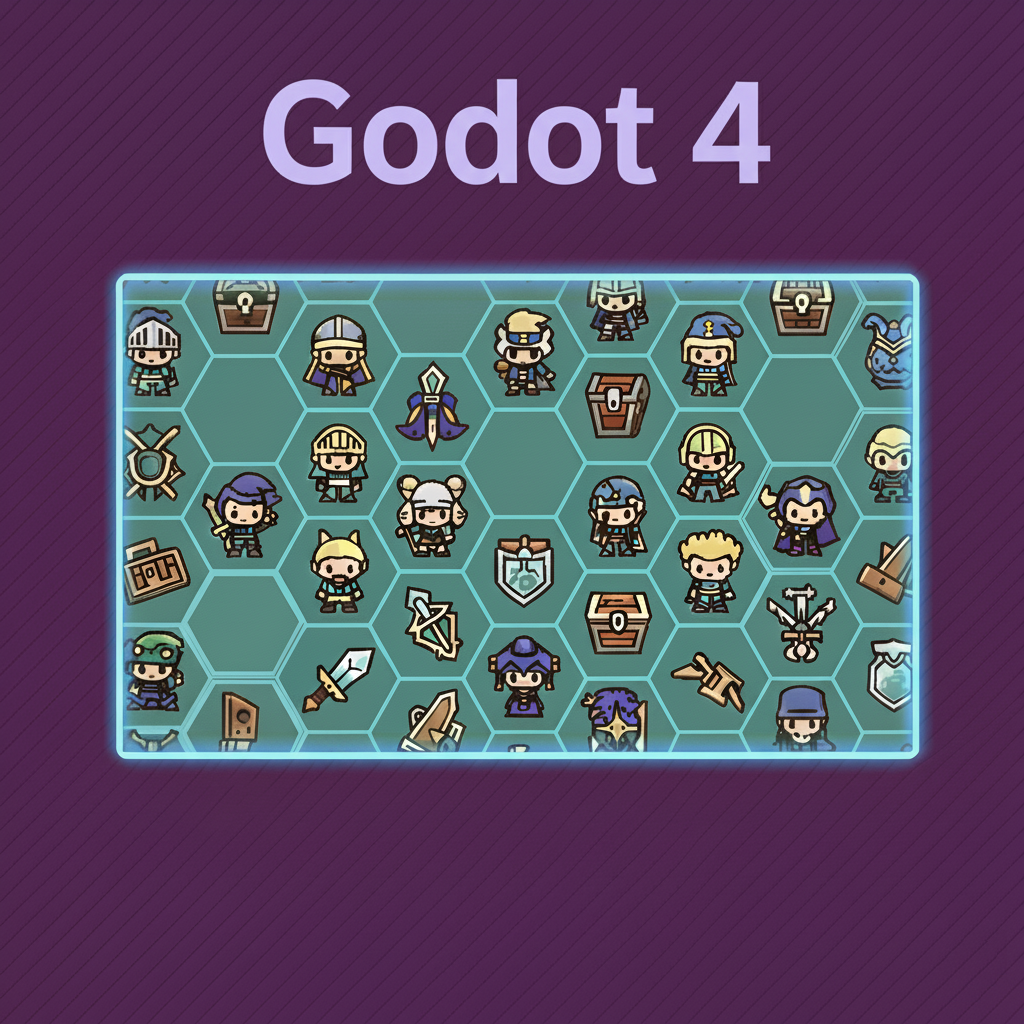
Crop Effect in Godot 4
When designing 2D levels, one common challenge is containing gameplay elements inside a bounded area—whether that’s a game board, a card table, or a scrolling dungeon. In Godot 4, the engine gives us powerful rendering tools to handle this elegantly.
Recently, I rebuilt part of my map system to achieve a “crop effect,” and the solution involved a combination of SubViewportContainer and SubViewport. Here’s a breakdown of the approach and some lessons learned.
The Problem: Bounding the Play Area
In my project, the level is represented by a two-layered board:
- Panel Outside: gives the board a colored border.
- Panel Inside: defines the playable ground area.
- All entities (player, enemies, props, effects) need to be displayed only inside the board, clipped at the edges.
At the same time, I wanted lights and effects to be shared between the inside panel and the entities placed on it. That meant I couldn’t just render everything in isolation—I needed a solution where cropping is handled automatically, while still allowing cross-node interaction.
The Solution: SubViewport as a Cropping Layer
The trick was to route the entire level’s contents through a SubViewport, which acts like an off-screen render target. By nesting that inside a SubViewportContainer, Godot automatically clips its contents to the container’s boundaries.
Here’s the scene structure from the project:
Level
└── CenterContainer
└── Control
└── Panel Outside
└── SubViewportContainer
└── SubViewport
└── Panel Inside
└── entities, tiles, etc...
Why this works:
- Panel Outside provides the border (background/border color).
- SubViewportContainer clips the rendered content.
- SubViewport renders the actual gameplay scene (
Groundand its children). - Panel Inside holds the playable area and lights and effects can interact naturally with it and its entities.
- The SubViewport size should always match your
Panel Insiderect for proper cropping. - Any new entity added to
Groundis automatically cropped.
Conclusion
This isn’t just about technical neatness. By structuring the map this way, you separate presentation (panels, borders, background) from content (entities, tiles, effects). That gives you:
- Cleaner iteration: designers can swap out board visuals without touching gameplay code.
- Robust scaling: adding more entities won’t break the crop effect.
- Consistent polish: clipping is handled at the rendering level, not per-node hacks.
This is the kind of invisible refinement that makes the final product look seamless—and it pays off when the game scales to more complex maps. Godot 4’s SubViewport system is a powerful tool for cropping, isolating, and organizing rendering.
If you’re working on a map-based game—or any project where elements need to stay within boundaries—this workflow is worth adopting early. It will save you headaches, and your maps will look clean right out of the box.